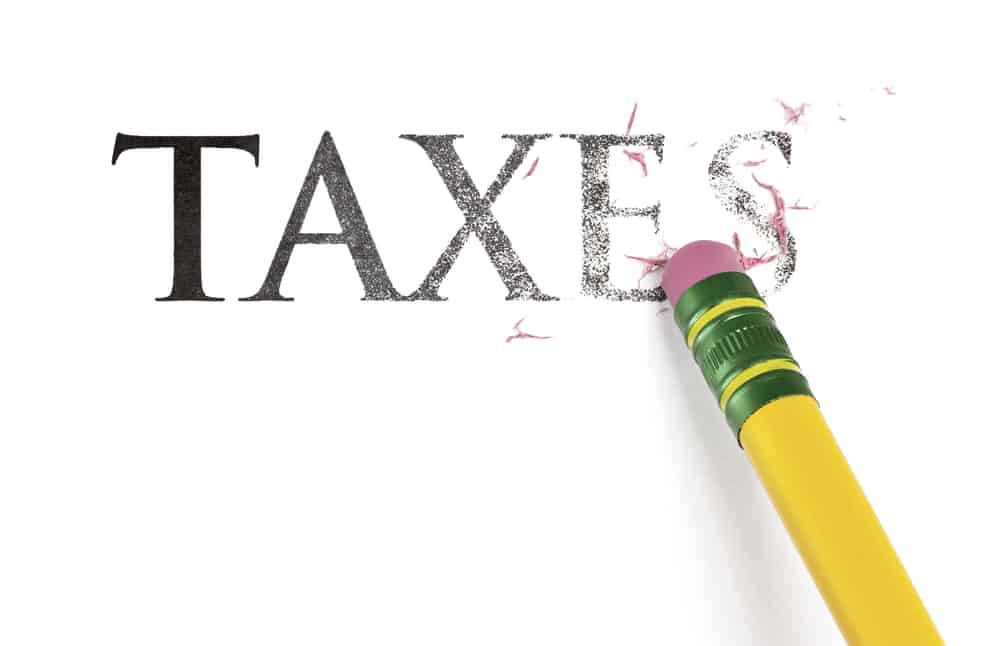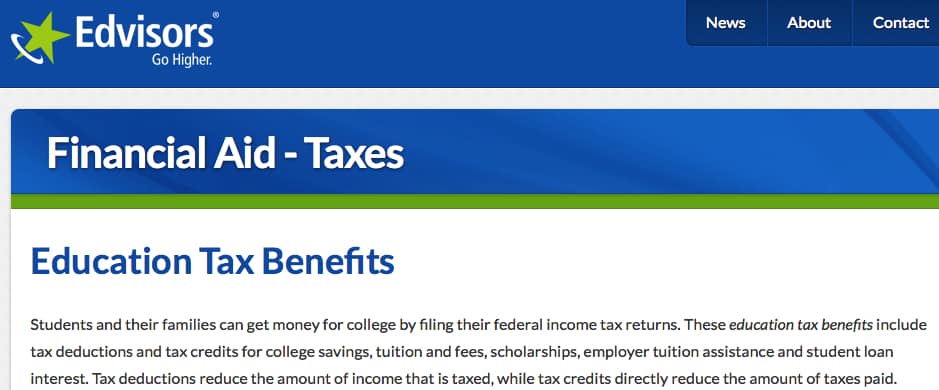
If you have a child in college, do you qualify for a federal tax credit or tax deduction?
These are valuable tax benefits that can help you defray the rising cost of a college degree and yet some parents have no idea that they exist or whether they would qualify.
Edvisor Network just launched a valuable online resource that explains these tax benefits in plain English and how they can best be used, which I think is a first for the Internet. Here is the main link to visit the site’s higher-ed tax benefit resource guide, which you can see in the screen shot below:
Learning About College Tax Credits
You have always been able to read about these higher-ed benefits on the IRS website or through IRS Publication 970, but when you finish you are likely to be scratching your head about which one to pick and the best way to use them. That’s why I particularly like the Edvisor Network’s tax benefit section entitled, Picking the Best Mix of Education Tax Credits and Deductions.
Mark Kantrowitz, one of the nation’s leading experts on financial aid, and David Levy, the former financial aid director of three colleges including California Institute of Technology, who both work at Edvisors Network, are the authors of this educational material. (Some of you might remember that Kantrowitz was the founder of FinAid.org, but he recently began working at Edvisor Network as its publisher. )
The Best Tax Credit
For most parents who qualify, the best tax benefit will be the American Opportunity Tax Credit. If you qualify, you  can claim a maximum $2,500 tax credit for each child in college. My husband and I got to claim this credit for each of our children and for the year that they were both in college we captured a $5,000 tax credit that reduced our tax bill by that amount. Awesome! (Tax credits are more valuable than tax deductions.)
can claim a maximum $2,500 tax credit for each child in college. My husband and I got to claim this credit for each of our children and for the year that they were both in college we captured a $5,000 tax credit that reduced our tax bill by that amount. Awesome! (Tax credits are more valuable than tax deductions.)
Taxpayers can claim 100% of the first $2,000 they spend on qualified college expenses for a student and 25% on the next $2,000 spent. Tuition and fees and course materials such as textbooks, supplies and equipment are eligible expenses. Room and board do not count. You can use this credit for no more than four years of college.
To qualify, a family’s modified adjusted gross income must be under $90,000 for a parent filing as a single taxpayer or under $180,000 for married parents filing jointly. There is a phaseout period.
No Double Dipping
What’s tricky about using the American Opportunity Tax Credit, as well as other tax credits and deductions, is that there is no double dipping. You can’t use the same educational expenses to qualify for more than one education tax benefit and that includes tax-free withdrawals from a 529 college savings account. (Those tax-free withdrawals are considered an educational benefit.) So when my husband and I claimed the American Opportunity Tax Credit, we had to make we weren’t using the same expenses twice.
For instance, if you withdrew $4,000 from a 529 plan to help pay for college tuition, you couldn’t use that same expenditure to qualify for the American Opportunity Tax Credit.
Bottom Line:
Explore your eligibility for tax credits or tax deductions that can shrink your college costs. The best place to learn more is at the Edvisor Network’s website.


Lynn, this is a very helpful post. The info on the Edvisors website is amazing. I don’t know of any other resource that summarizes all the various education related tax benefits in one spot.
Hi Mike,
Glad you found the info helpful. I think this is the best source for information on these tax credits and deductions.
Lynn O’Shaughnessy
If the tuition portion (not room and board) of my bill is $10,000, and I use $6000 from a 529 and the remaining $4000 from personal savings, can the American Opportunity Tax Credit be used on the $4000?
Yes Maryann.
Lynn O’Shaughnesshy